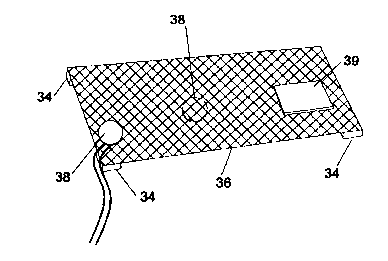Some of the information on this Web page has been provided by external sources. The Government of Canada is not responsible for the accuracy, reliability or currency of the information supplied by external sources. Users wishing to rely upon this information should consult directly with the source of the information. Content provided by external sources is not subject to official languages, privacy and accessibility requirements.
Any discrepancies in the text and image of the Claims and Abstract are due to differing posting times. Text of the Claims and Abstract are posted:
| (12) Patent Application: | (11) CA 2338690 |
|---|---|
| (54) English Title: | ACOUSTIC DEVICE USING BENDING WAVE MODES |
| (54) French Title: | DISPOSITIF ACOUSTIQUE UTILISANT DES MODES A ONDES DE FLEXION |
| Status: | Deemed Abandoned and Beyond the Period of Reinstatement - Pending Response to Notice of Disregarded Communication |
| (51) International Patent Classification (IPC): |
|
|---|---|
| (72) Inventors : |
|
| (73) Owners : |
|
| (71) Applicants : |
|
| (74) Agent: | SMART & BIGGAR LP |
| (74) Associate agent: | |
| (45) Issued: | |
| (86) PCT Filing Date: | 1999-07-26 |
| (87) Open to Public Inspection: | 2000-02-10 |
| Availability of licence: | N/A |
| Dedicated to the Public: | N/A |
| (25) Language of filing: | English |
| Patent Cooperation Treaty (PCT): | Yes |
|---|---|
| (86) PCT Filing Number: | PCT/GB1999/002221 |
| (87) International Publication Number: | WO 2000007408 |
| (85) National Entry: | 2001-01-26 |
| (30) Application Priority Data: | ||||||
|---|---|---|---|---|---|---|
|
An acoustic device, e.g. a loudspeaker, has a transducer (38) coupled via a
highly perforate member (36) to an acoustically active area (39) that may be
in the form of a skin over part of the highly perforate member. The highly
perforate member (36) may be a mesh. Bending waves may be excited in the
highly perforate member (36) by the transducer (38) and sound emitted from the
acoustically active area (39).
L'invention porte sur un dispositif acoustique, par exemple un haut-parleur, muni d'un transducteur (38) relié par un élément fortement perforé (36) à une zone acoustiquement active (39) pouvant avoir la forme d'une peau disposée sur l'élément perforé (36), ce dernier (36) pouvant être maillé. On peut créer des ondes de flexion dans l'élément perforé à l'aide du transducteur (38) et du son émis par la zone acoustiquement active (39).
Note: Claims are shown in the official language in which they were submitted.
Note: Descriptions are shown in the official language in which they were submitted.

2024-08-01:As part of the Next Generation Patents (NGP) transition, the Canadian Patents Database (CPD) now contains a more detailed Event History, which replicates the Event Log of our new back-office solution.
Please note that "Inactive:" events refers to events no longer in use in our new back-office solution.
For a clearer understanding of the status of the application/patent presented on this page, the site Disclaimer , as well as the definitions for Patent , Event History , Maintenance Fee and Payment History should be consulted.
| Description | Date |
|---|---|
| Inactive: IPC from MCD | 2006-03-12 |
| Application Not Reinstated by Deadline | 2004-07-26 |
| Time Limit for Reversal Expired | 2004-07-26 |
| Deemed Abandoned - Failure to Respond to Maintenance Fee Notice | 2003-07-28 |
| Inactive: Cover page published | 2001-04-24 |
| Inactive: First IPC assigned | 2001-04-12 |
| Letter Sent | 2001-03-30 |
| Inactive: Notice - National entry - No RFE | 2001-03-30 |
| Application Received - PCT | 2001-03-28 |
| Application Published (Open to Public Inspection) | 2000-02-10 |
| Abandonment Date | Reason | Reinstatement Date |
|---|---|---|
| 2003-07-28 |
The last payment was received on 2002-06-11
Note : If the full payment has not been received on or before the date indicated, a further fee may be required which may be one of the following
Please refer to the CIPO Patent Fees web page to see all current fee amounts.
| Fee Type | Anniversary Year | Due Date | Paid Date |
|---|---|---|---|
| Basic national fee - standard | 2001-01-26 | ||
| Registration of a document | 2001-01-26 | ||
| MF (application, 2nd anniv.) - standard | 02 | 2001-07-26 | 2001-07-25 |
| MF (application, 3rd anniv.) - standard | 03 | 2002-07-26 | 2002-06-11 |
Note: Records showing the ownership history in alphabetical order.
| Current Owners on Record |
|---|
| NEW TRANSDUCERS LIMITED |
| Past Owners on Record |
|---|
| DENIS MORECROFT |